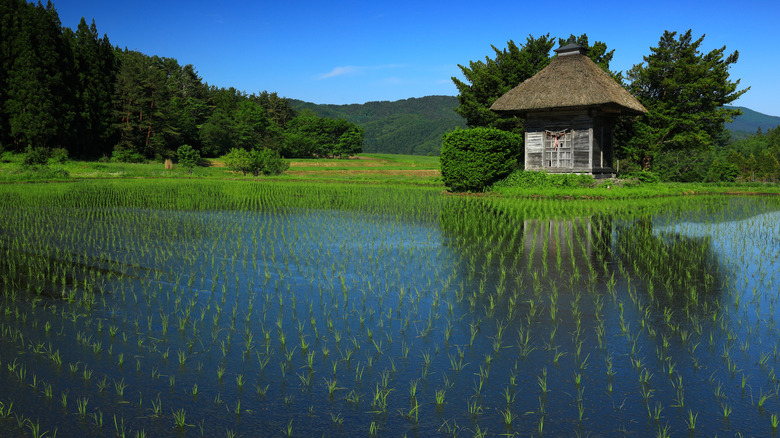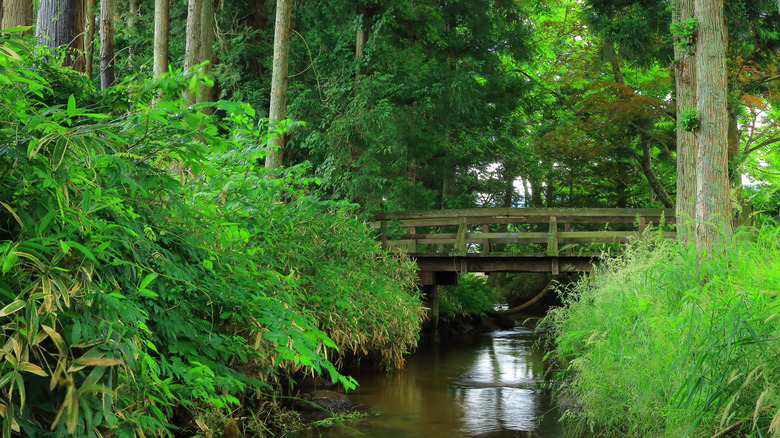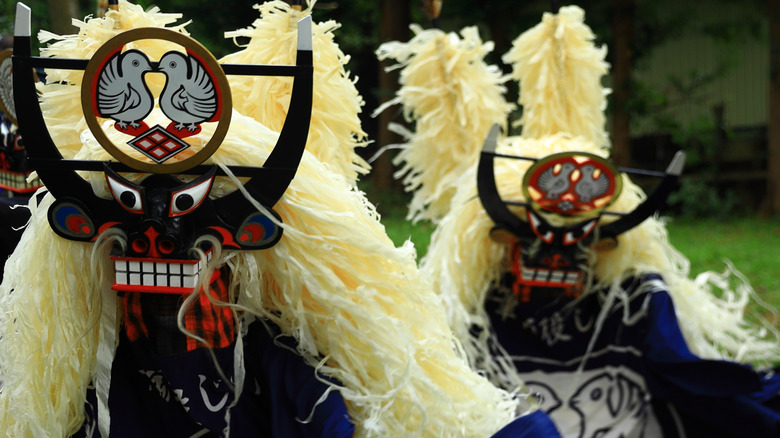Japan's 'City Of Folklore' Is A Picturesque Mountain Town Full Of Spirits And Charming Legends
In the small Japanese city of Tono, the residents keep one wary eye on the looming Kitakami mountain range. They grew up listening to whispered tales of the figures hidden amid the peaks, ever present on the misted horizon. The mountains concealed the secrets of squabbling goddesses, lascivious kappas lurking in the brush, malevolent ijins who snatch village children, and the spirits of mad sons who murdered their mothers. The hills are said to ring with the howling of phantom wolves, the shrieks of ghostly victims, the calls of birds that snatch horses from fields, and the incantations of distant witches. A breeding ground for macabre tales, Tono is known in Japan for spooky storytellers spinning legends and for being a central piece of the country's rich folkloric tradition.
While traveling to the city might not quite be a step into the parabolic tales documented in "The Legends of Tono," it's still a serious shift for those accustomed to neon glare and thrilling nightlife adventures in Japan's trendiest areas. Less than 30,000 people call Tono home, and it resembles a rural outcrop more closely than an urban sprawl. Its attractions are strewn across the valley basin that is splayed between its mysterious mountains, making it tricky to navigate between them on public transport. It's best to rent a car or a motorized bike to explore once you arrive. Reaching the city itself is simpler. Hop on the Shinkansen (a super-affordable way of traveling if you have a pass only available to foreign tourists) from Tokyo Station to Shin-Hanamaki Station, then switch to the JR Kamaishi Line to Tono Station.
Retrace stories from myth and history in Tono, Japan
In the same way that US campers huddle around fires to tell tales of monsters hidden in the eerie Appalachians, Tono locals whisper their unearthly experiences with the region's fabled demons. The most famous of their mystical exports is the kappa, a shapeshifting water demon that lurks in the shallows and waits to drown or devour unsuspecting swimmers. There's a creek 10 minutes' drive away from Tono Station, an innocent looking stream rumored for centuries to be crawling with kappa. If you don't happen to have purchased a kappa hunting license in advance, you'll have to content yourself with scouring the riverbanks for webbed footprints or seeing the devilish creature in its ceramic form, looking for the bright blue statue of a kappa sitting beside Kappabuchi Pond. The fabled water can be found behind the Joken-ji Temple, a 15th century site of worship for the Soto Zen Buddhist sect.
Explore the temple and then take a short onwards walk to Denshoen Park, one of Tono's traditional villages, designed to offer guests a glimpse into life in earlier eras of the town's history and superstitions. In Denshoen you'll find a room with more than 1000 oshirasama statuettes, carved depictions of a silk deity born of a human and a horse, and a memorial to Kizen Sasaki, who put much of Tono's folklore into writing. There's another cultural village slightly further from town, Tono Furusato Village, which opens its Edo period (1603–1868) doors to travelers curious about day-to-day life in Tono's more prosperous past.
Attend a festival in Tono to get involved in Japan's folkloric traditions
Deeply entrenched in history, folklore, and tradition, it's no surprise that Tono has a busy annual calendar of cultural festivals and events. With the exception of the often 14-degree Fahrenheit winter months, almost every month overlaps with a celebration of some kind, so make sure you check the event calendar when you're planning your Tono trip.
One of the best known among them is the Tono Meguritoroge Festival held each August. At the relatively recently introduced festival, a ghostly procession of dancers clad in costumes and painted masks guides participants and observers up a dark path through the still, dense forests to the Gohyaku Rakan. These are carved faces concealed by the trees, a tribute made by a Buddhist priest from the Daiji-ji Temple to the victims of the Great Tenmei famine of 1782. Eaten away by 200 years of encroaching moss, the eyes of the starved now watch the procession pass, a display designed to pacify their spirits, still restless and lost in the forests of Tono.
A number of traditional dances are performed during this festival, but you can catch them at other times in the year too. On the third Saturday and Sunday of September each year, some 60 groups gather to tell folkloric tales through dances and parades. Mounted yabusame archers also make their displays during this festival, exhibiting a samurai skillset unaltered since its introduction by Japan's first shogun in the 12th century.


